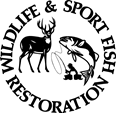O.H. Ivie Reservoir 2021 Survey Report
If you have difficulty accessing the information in this document, contact the TPWD Inland Fisheries Division for assistance.
O.H. Ivie Reservoir - 2021 Survey Report
Prepared by Lynn Wright and Blake Thornton
Inland Fisheries Division
San Angelo District
This is the author's summary from a 42-page report. For a copy of the complete report, use the download link in the sidebar.
Fish populations in O.H. Ivie Reservoir were surveyed in 2018, 2019, 2020 and 2021 using electrofishing and in 2022 using gill netting. Anglers were surveyed from June 2019 through May 2020 and from March 2022 through May 2022 using a creel survey. Historical data are presented with the 2021-2022 data for comparison. This report summarizes the results of the surveys and contains a management plan for the reservoir based on those findings.
Reservoir Description
At conservation pool, O.H. Ivie Reservoir is a 19,149-acre impoundment and is located on the Colorado and Concho Rivers in Concho, Runnels, and Coleman counties, Texas, approximately 55 miles east of San Angelo. Water level fluctuations are common; the reservoir elevation has ranged from 8 to 49 feet below conservation pool from 2000 to 2022. In 2022, the reservoir surface area was approx. 12,000 acres. Habitat features consisted of standing timber, rocks, native submersed vegetation, and flooded saltcedar.
Management History
: Fish harvest is regulated according to the standard statewide restrictions, except for Largemouth Bass. In most years since 2001, an electrofishing survey or creel survey was conducted to evaluate the effectiveness of the 2001 Largemouth Bass length limit change. The harvest regulation changed from an 18-inch minimum length limit (MLL) and 5-fish daily bag limit (DBL) to a 5-fish DBL, 2 of which may be <18 inches and no MLL. In 2015, the 18-inch MLL on Smallmouth Bass was removed and replaced with statewide regulations. A variety of fish species have been stocked in the reservoir including Threadfin Shad; Bluegill; Channel, Blue and Flathead Catfishes; Florida Largemouth Bass; Smallmouth Bass; White Crappie; and Walleye. Walleye stockings were discontinued after failing to produce a fishery.
Fish Community
- Prey species: Threadfin Shad were not collected in 2021, but historically have been present in low abundance. The abundance of Gizzard Shad was slightly below long-term averages, and few Gizzard Shad were available as prey to most sport fish. Electrofishing catch of Bluegill has increased over the past three surveys.
- Catfishes: The Blue and Channel Catfish populations continued to display low gill net catch rate, but a good portion of the catch were sizes preferred by anglers with 42% of Blue Catfish and 48% of Channel Catfish sampled exceeding 18 inches. Flathead Catfish were not sampled in gill nets in 2022 but are known to be present in the reservoir
- White Bass: White Bass abundance was down in 2022 compared to previous years. White Bass were highly sought-after during the 2019-2020 creel period with 19,317 angler hours and 8,367 harvested.
- Largemouth Bass: O.H. Ivie has developed into the most productive trophy bass fishery in the country over the past few years. The reservoir produced 30 trophy bass over 13 lbs. in 2021 and 2022 combined. Angler effort for Largemouth Bass was very high as directed effort for Largemouth Bass in spring 2022 was nearly double the long-term average. Growth was adequate with bass reaching 18 inches in 4.2 years in 2020. Size structure showed improvement as the strong year-class from 2019 continues to grow into larger size classes. The genetic composition was 84% Florida bass alleles, while 27% of bass sampled were pure Florida strain Largemouth Bass.
- White Crappie: Crappie anglers spent 9,864 hours fishing for crappie during the 2019-2020 creel period. Catch rate and harvest was down compared to previous surveys.
Management Strategies
- Continue to stock Florida Largemouth Bass annually contingent upon adequate water levels and habitat.
- Vegetation surveys will be conducted in 2022, 2023, 2024 and 2025 to survey hydrilla coverage.
- An access survey will be conducted in 2025.
- Conduct a year-long creel survey in 2025-2026.

Performance Report as required by Federal Aid in Sport Fish Restoration Act Texas Federal Aid Project F-221-M-3 Inland Fisheries Division Monitoring and Management Program